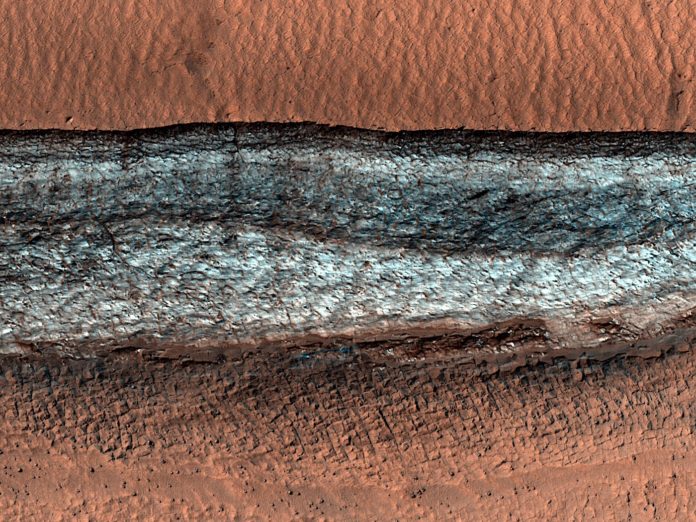It’s not a secret anymore that Mars has ice. We generally find it at the poles, in the form of ice caps. It comes to be after water vapor reaches the poles and freezes. It’s not such an abundant quantity of water, but since it gets mixed with sand, it quickly forms thick deposits.
Photo: NASA/JPL-Caltech/UArizona
Such subsurface ice can also be found at mid-latitudes, and if it weren’t for cliff cuts in the surface layers, we wouldn’t know it’s there.
Such a large cut, a scar over the reddish soil, is seen in this image here, snapped by the HiRISE camera from an altitude of 251 km (156 miles) back in July 2022. It shows an unnamed region of the planet, a place where the “ground is uniform and dusty and does not reveal many clues about what lies beneath the surface.”
The said cut does however reveal “a glimpse of this buried icy material,” and it’s even more important because of the fact the cliff is “one example out of a few dozen that are known.”
Scientists from the University of Arizona, which run the HiRISE camera, explain what we see here is ice (the bright material on the cliff face), present only on the side of the cliff that points away from the equator, from where the Sun shines.
The bands we see running the length of the visible portion of the cliff are of unknown origin, but they “might indicate layers in the ice that record different climate conditions,” and if that’s true, it’s extremely important for the people looking at Mars in an attempt of making sense of the place before we really start colonizing the place, as it may shed more light on the planet’s past.
Scientists say it’s unknown “how much time this ice took to accumulate here,” but what we see could be tens of millions of years old.

